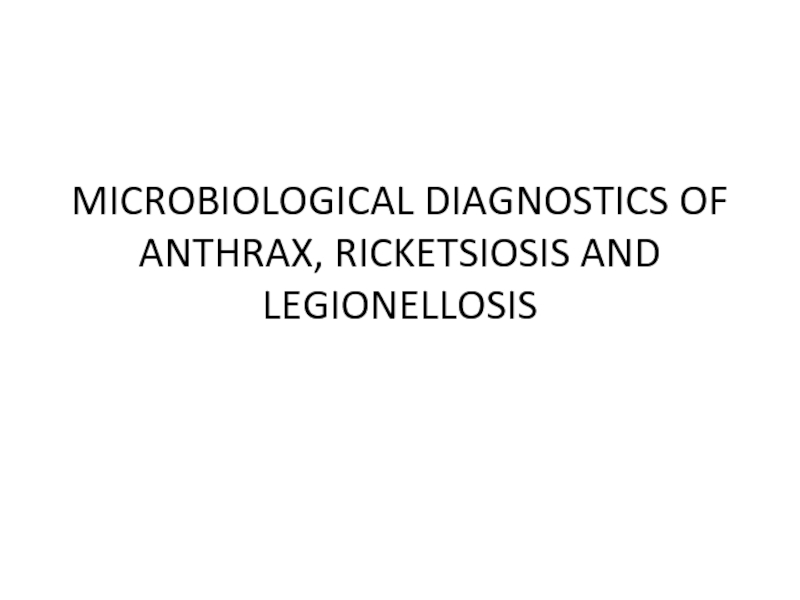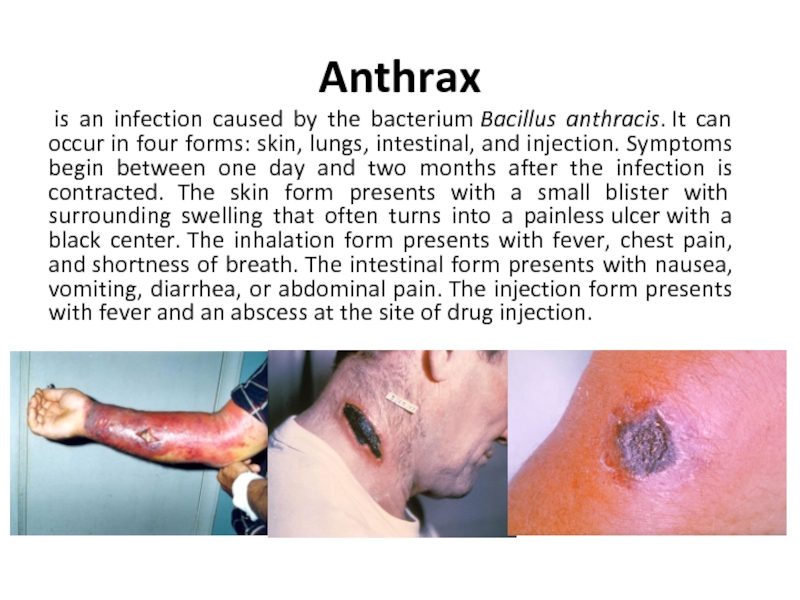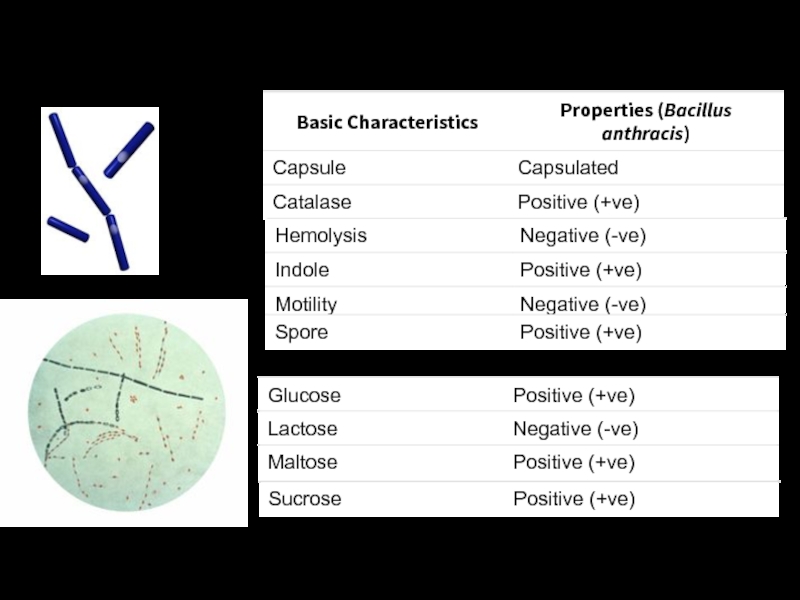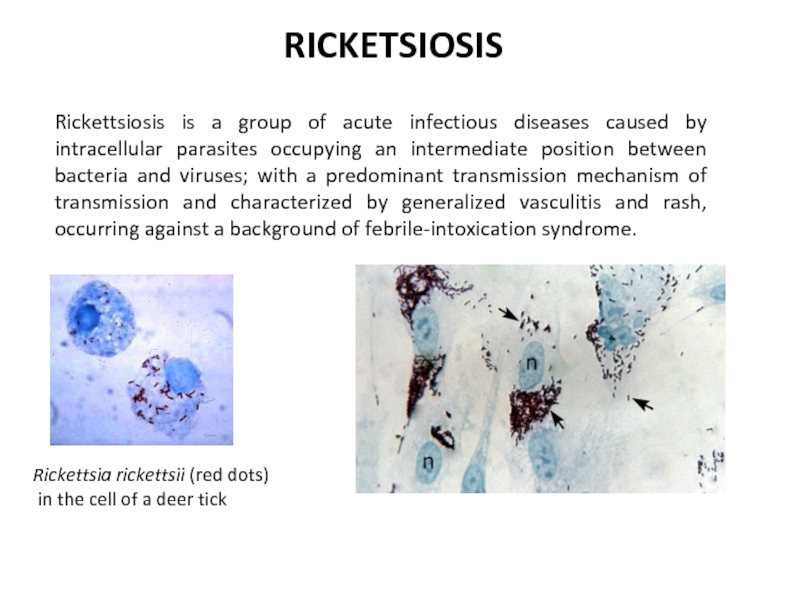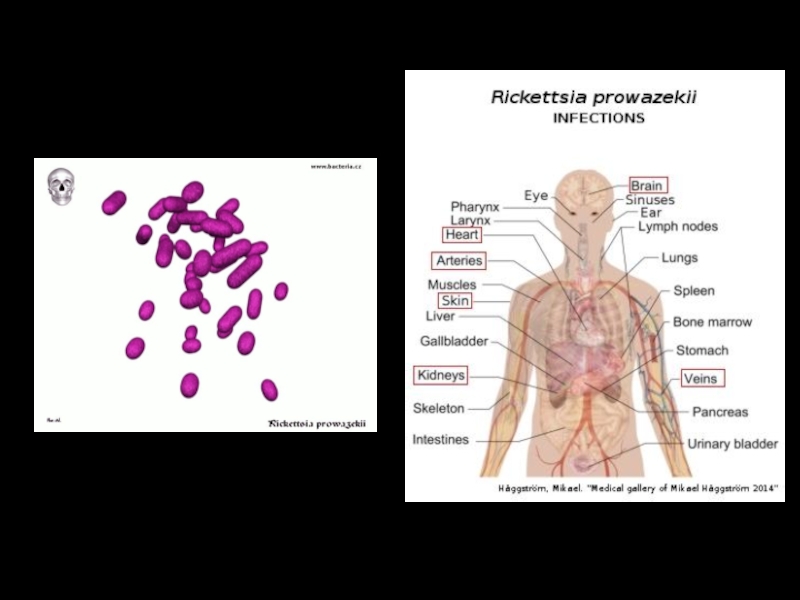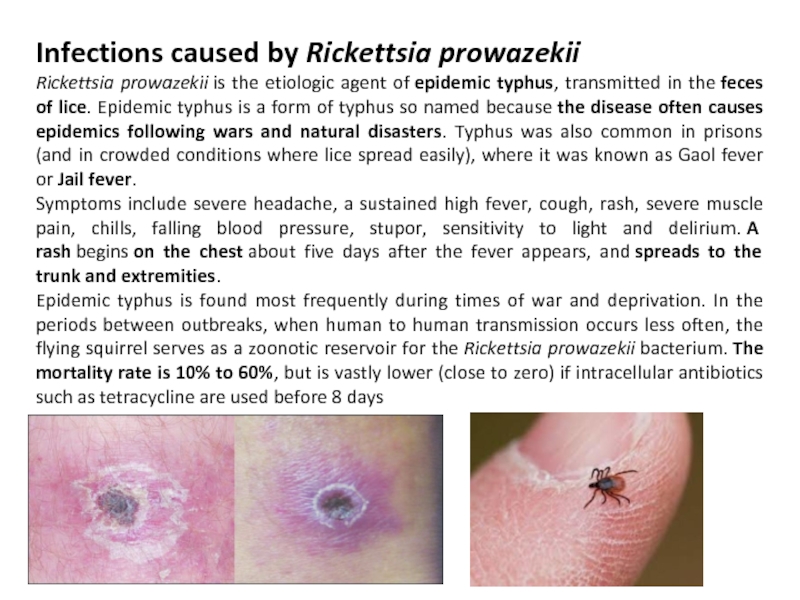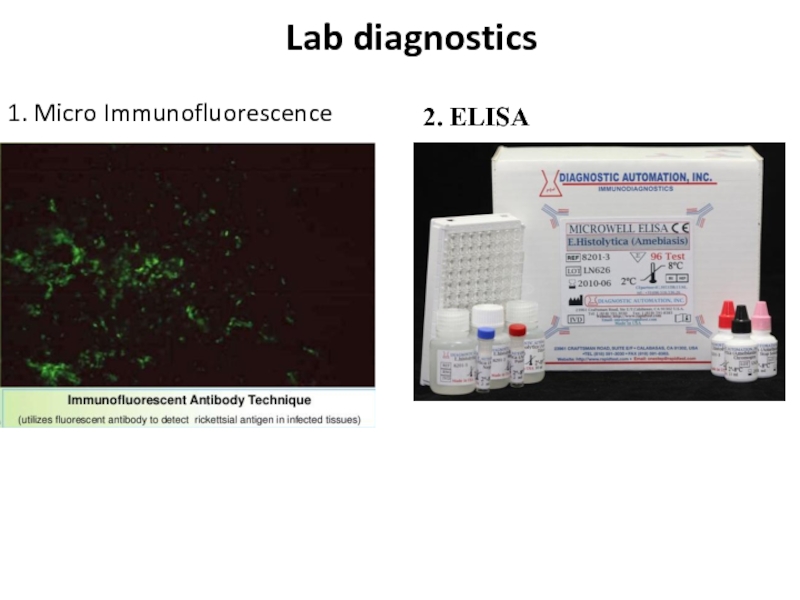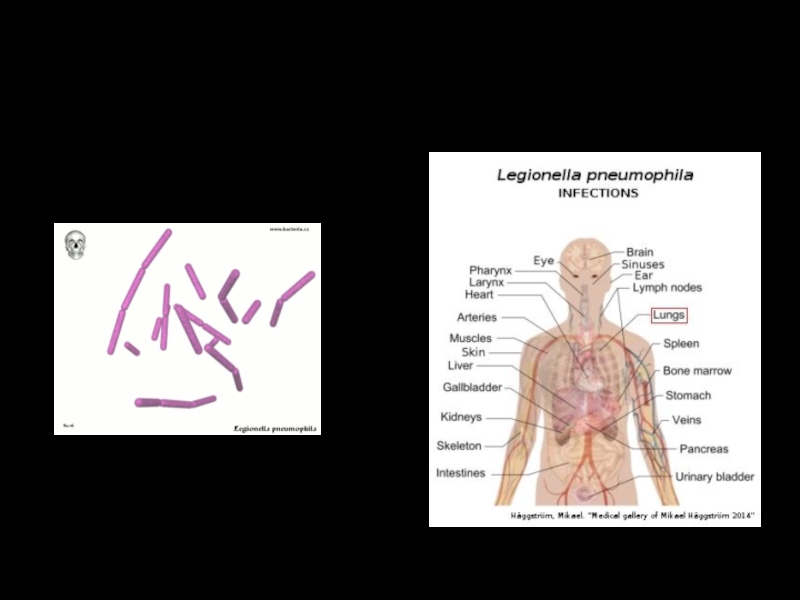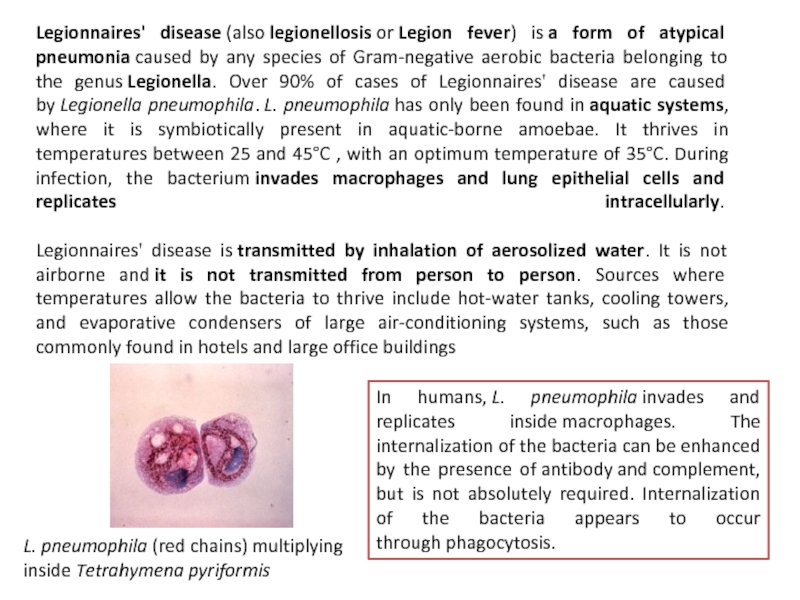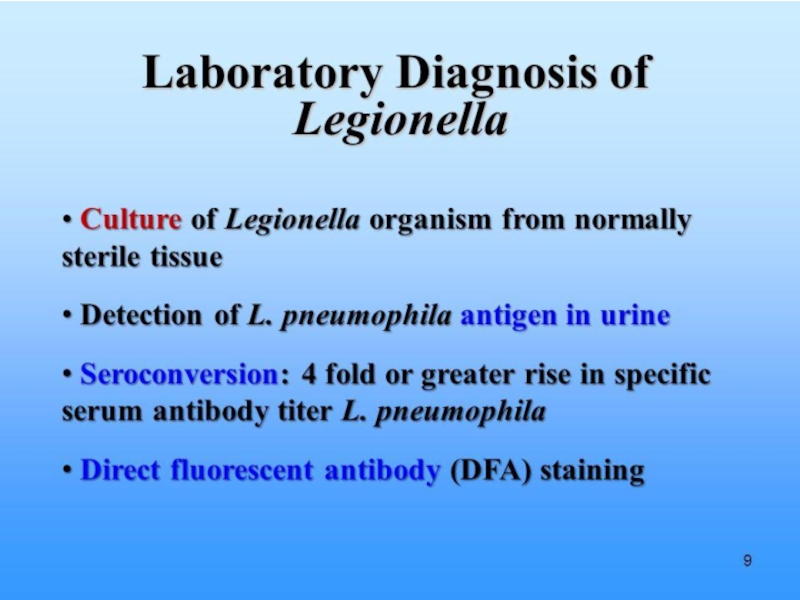- Главная
- Разное
- Дизайн
- Бизнес и предпринимательство
- Аналитика
- Образование
- Развлечения
- Красота и здоровье
- Финансы
- Государство
- Путешествия
- Спорт
- Недвижимость
- Армия
- Графика
- Культурология
- Еда и кулинария
- Лингвистика
- Английский язык
- Астрономия
- Алгебра
- Биология
- География
- Детские презентации
- Информатика
- История
- Литература
- Маркетинг
- Математика
- Медицина
- Менеджмент
- Музыка
- МХК
- Немецкий язык
- ОБЖ
- Обществознание
- Окружающий мир
- Педагогика
- Русский язык
- Технология
- Физика
- Философия
- Химия
- Шаблоны, картинки для презентаций
- Экология
- Экономика
- Юриспруденция
Microbiological diagnostics of anthrax, ricketsiosis and legionellosis презентация
Содержание
- 1. Microbiological diagnostics of anthrax, ricketsiosis and legionellosis
- 2. Anthrax is an infection caused by the
- 3. Bacillus anthracis fuchsin-methylene blue spore stain Fermentation of
- 4. This was a blood agar culture plate
- 5. Rickettsiosis is a group of acute infectious
- 6. Rickettsia prowazekii appearance small Gram-negative short rods or coccobacilli nonmotile obligate intracellular parasite
- 7. Infections caused by Rickettsia prowazekii Rickettsia prowazekii is the
- 8. Lab diagnostics 1. Micro Immunofluorescence 2. ELISA
- 9. LEGIONELLOSIS Legionellosis is an infectious disease caused
- 10. Legionnaires' disease (also legionellosis or Legion fever) is a form of atypical
- 11. Lab diagnostics
Слайд 2Anthrax
is an infection caused by the bacterium Bacillus anthracis. It can occur in
Слайд 4This was a blood agar culture plate growing Bacillus anthracis and other soil
Слайд 5Rickettsiosis is a group of acute infectious diseases caused by intracellular
RICKETSIOSIS
Rickettsia rickettsii (red dots)
in the cell of a deer tick
Слайд 6Rickettsia prowazekii appearance
small Gram-negative short rods or coccobacilli
nonmotile
obligate intracellular parasite
Слайд 7Infections caused by Rickettsia prowazekii
Rickettsia prowazekii is the etiologic agent of epidemic typhus, transmitted
Symptoms include severe headache, a sustained high fever, cough, rash, severe muscle pain, chills, falling blood pressure, stupor, sensitivity to light and delirium. A rash begins on the chest about five days after the fever appears, and spreads to the trunk and extremities.
Epidemic typhus is found most frequently during times of war and deprivation. In the periods between outbreaks, when human to human transmission occurs less often, the flying squirrel serves as a zoonotic reservoir for the Rickettsia prowazekii bacterium. The mortality rate is 10% to 60%, but is vastly lower (close to zero) if intracellular antibiotics such as tetracycline are used before 8 days
Слайд 9LEGIONELLOSIS
Legionellosis is an infectious disease caused by legionella bacteria that multiply
thin, Gram-negative bacteria; Legionella stains poorly with Gram stain; may become filamentous in culture
motile (one polar flagellum)
non-encapsulated
non-spore-forming
Слайд 10Legionnaires' disease (also legionellosis or Legion fever) is a form of atypical pneumonia caused by any species
L. pneumophila (red chains) multiplying inside Tetrahymena pyriformis
In humans, L. pneumophila invades and replicates inside macrophages. The internalization of the bacteria can be enhanced by the presence of antibody and complement, but is not absolutely required. Internalization of the bacteria appears to occur through phagocytosis.
